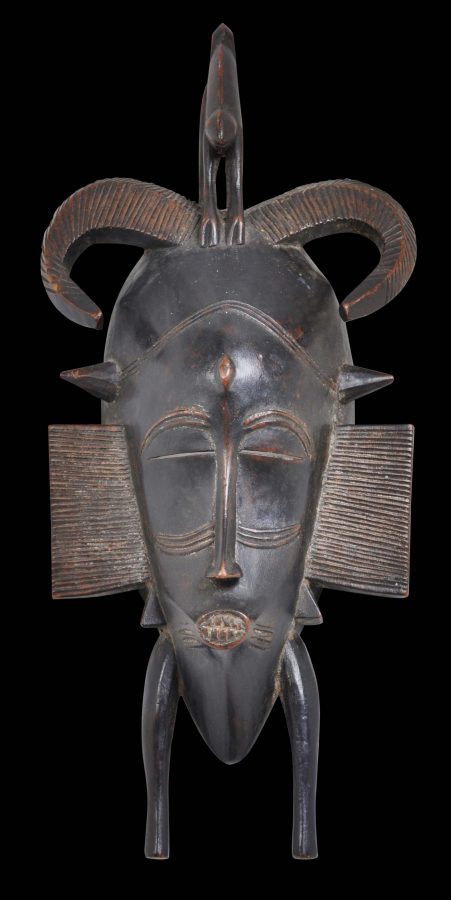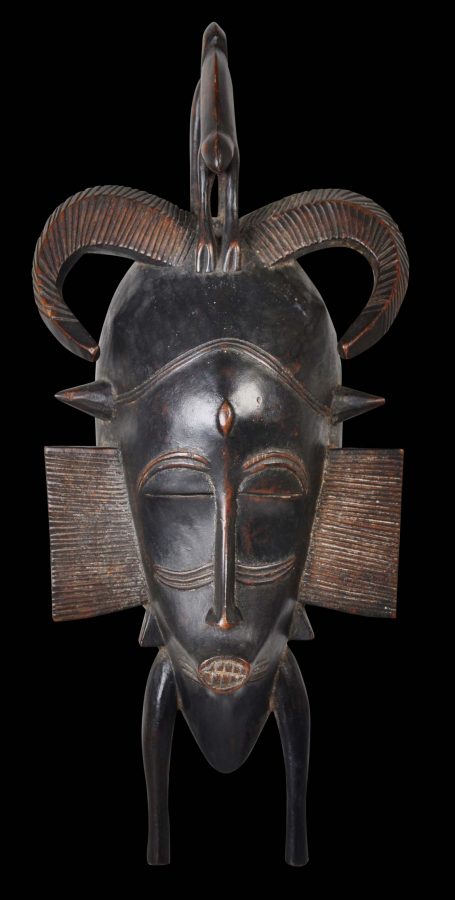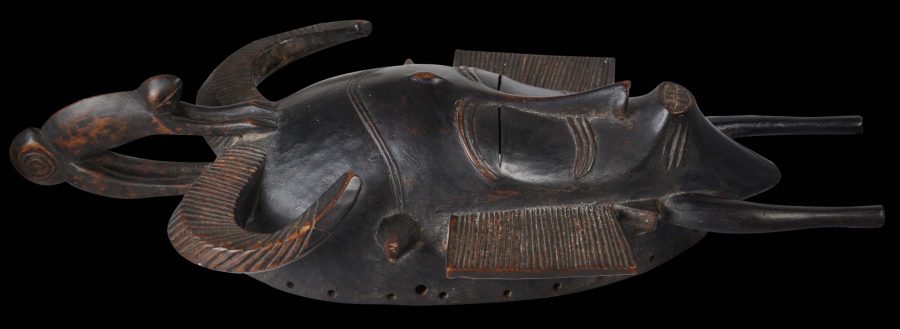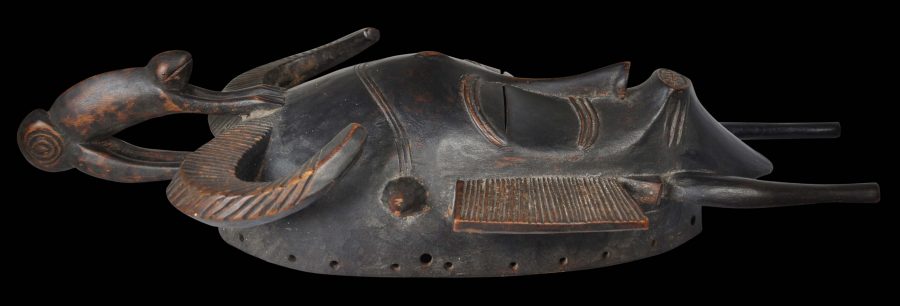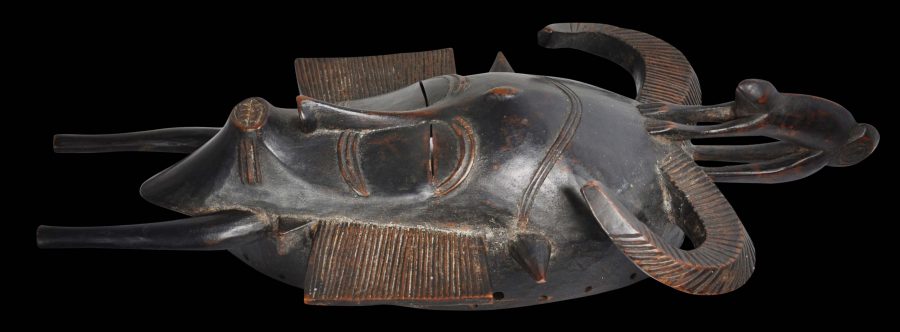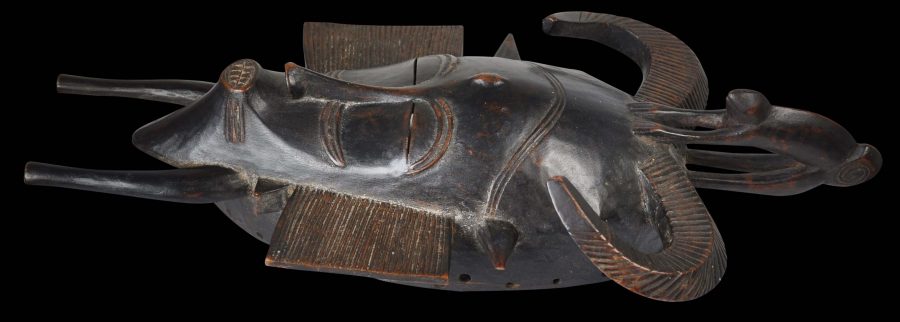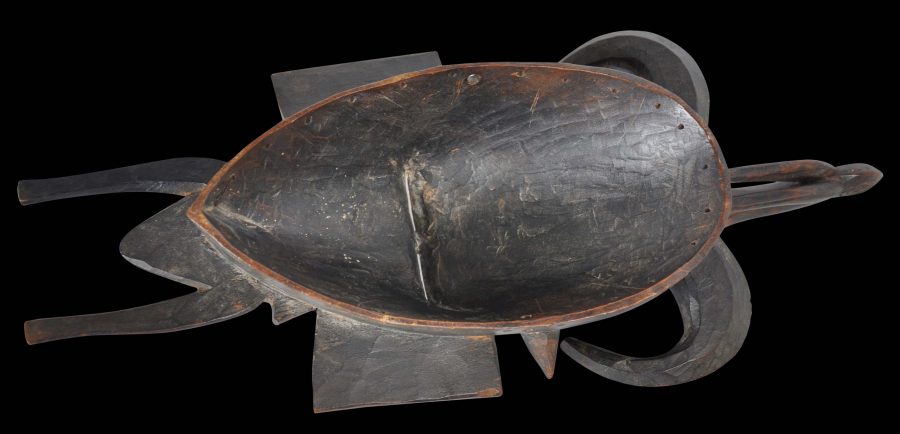This very finely-carved mask (kpelie) is from the group of peoples that have become known as the Senufo. It dates to the 1920s and has a patina consistent with such a dating. It would have been used in masquerade dance rituals.
It has been carved from a single piece of wood. It is of oval form. It has a pursed, projecting mouth displaying gritted teeth. A long, slender nose leads to double, arched eyebrows and closed lids above pierced eye slits. There are three rows of scarification on the lower cheeks.
The whole is framed by numerous protrusions, horns and flanges, including an arched feline creature surmounting the crest, and finely lined ‘wing’ protrusions on either side of the face.
The rim has been drilled all the way around with holes to allow the mask to be attached to textile or raffia so that the whole could be worn over the head.
Related examples are illustrated in Robbins & Nooter (1989, p. 114) and Gagliardi (2015, p, 98).
The mask has a lustrous, blackened patina, and the surface has much evidence of age and light encrustation under a magnifying loop.
The mask is in excellent condition. One of the lower pendant protuberances appears to have a crack but this is stable and only discernible on close inspection. Overall, this is a fine, well-carved example with tremendous presence.
This mask is accompanied by an attractive, high-quality, custom-made stand.
References
Gagliardi, S.E., Senufo Unbound: Dynamics of Art and Identity in West Africa, 5 Continents, 2015.
Robbins, W. M. & N. I. Nooter, African Art in American Collections, Smithsonian Institution Press, 1989.


